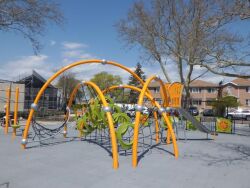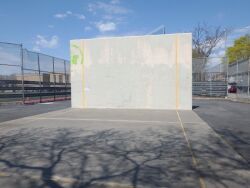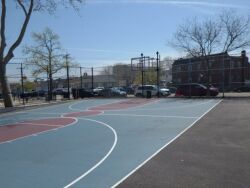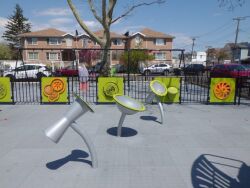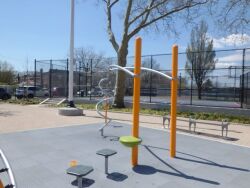Al Stabile Playground
John Adams Playground
This playground, like the adjacent High School, honors John Adams (1735-1826), the American patriot and the second President of the United States Born in Braintree, Massachusetts, just outside Boston, Adams graduated from Harvard College in 1755, and three years later moved back to Braintree and began practicing law in Boston. In 1764, Adams married Abigail Smith (1744-1818), who would not only be his wife but would serve as an important political partner as well.
Adams quickly developed a reputation for opposition to British Colonial Rule. Adams made public his opinions on the oppressive nature of Acts of Parliament, such as the Stamp Act of 1765 and the Townshend Act of 1767. In 1774, Adams’ ardent desire for American independence, and his belief that reconciliation with the British was impossible, led him to join the most radical faction of the First Continental Congress. Adams was so passionate in his desire for independence that by the time of the Second Continental Congress, in 1775, he was known as the Atlas of Independence. For his drafting of the Massachusetts State Constitution, Adams gained a reputation as a skilled political writer and philosopher. His incorporation of a bicameral legislature and separation of power between branches of government would later be a model for the constitutions of other states, as well as for the United States Constitution.
After the Revolutionary War, Adams and Benjamin Franklin (1706-1790) traveled to France to negotiate the Treaty of Paris, which outlined the terms of peace with the British. Upon returning home in 1789, Adams came in second in the nation’s first presidential election and, in accordance with electoral law at the time, became vice president. Adams was not fond of the position, calling it “the most insignificant office that ever the invention of man contrived or his imagination conceived.” Yet Adams had a substantial influence on the legislative process; his votes decided more Senate deadlocks than those of any other vice president.
In 1796, after George Washington (1732-1799) declined to run for a third term, Adams decided to run for President a second time. The Federalist Adams narrowly defeated the Republican Thomas Jefferson (1743-1826), creating a situation in which a Republican was the vice president under a Federalist administration. This awkward development, combined with the nearly impossible task of living up to General Washington, the nation’s greatest Revolutionary hero, crippled the Adams administration. Although Adams was able to maintain neutrality in a conflict between France and Britain, the achievement cost him politically. Worse still for Adams’ political future was the signing of the Alien and Sedition Acts in 1798, making it legal for the government to deport foreign-born residents and indict those who published writings “against the government of the United States.”
In the election of 1800, Jefferson defeated Adams, who retired to Massachusetts without attending Jefferson’s inauguration. Adams continued his intellectual life of reading and writing, lived to see his son John Quincy Adams (1767-1848) become the sixth President of the United States, and eventually resuscitated his friendship with Jefferson. Both men died on July 4, 1826, the 50th anniversary of the Declaration of Independence.
Located at 133 Avenue, from 101 street to 103 street, Parks acquired the site for John Adams Playground by condemnation on August 19, 1938. In 1945, the Works Progress Administration converted much of the playground’s acreage into an athletic field for the adjacent John Adams High School. Both the field and the playground were operated jointly by Parks and the Board of Education. In 1973, the Board of Education acquired full jurisdiction over the field, leaving Parks with the playground. In 2000, Parks initiated a major reconstruction project in John Adams Playground, with Major Rudolph W. Giuliani providing $121,000 for new play equipment and safety surfacing. The additions complement the park’s three basketball half-courts, two handball courts, and tree-lined sitting area.
Check out your park's Vital Signs
Clean & Safe
Green & Resilient
Empowered & Engaged Users
Share your feedback or learn more about how this park is part of a
Vital Park System

